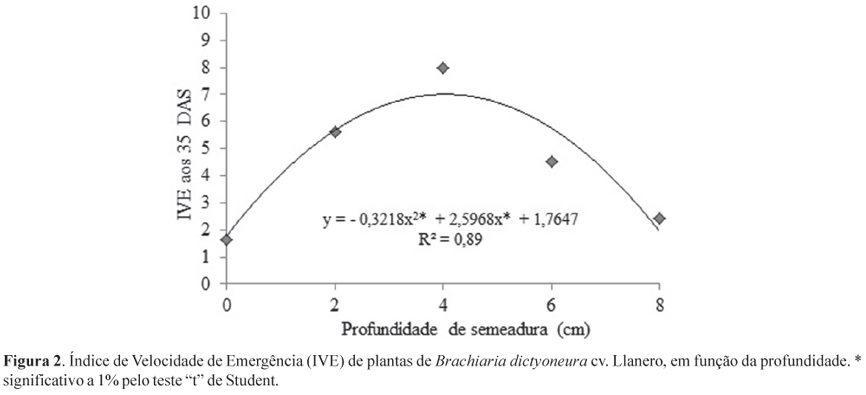Brazil is the largest producer, consumer and exporter of forage seeds from tropical climate. The objective of this study was to evaluate the initial development of Brachiaria dictyoneura cv. Llaneroaccording to sowing depth and methods of breaking dormancy. The experiment was conducted in a greenhouse in a randomized block design with four replications in a split plot design. The five treatments used in the experiment were sowing depths (0; 2.0; 4.0; 6.0 and 8.0 cm) and methods of breaking dormancy (with and without scarification)in subplots. Each plot consisted of 25 seeds and from the 10th day of sowing, emerged plants were counted to determine the emergence speed index and on the 35th day after sowing, the seedlings emergence, plant height and the dry mass of shoots were evaluated. Seeds of B. dictioneura sown at 4.0 cm of deepness and submitted to mechanical scarification showed better growth in all parameters evaluated. The surface sowing and at depths below 4.0 cm are inefficient for establishing B. dictioneurapastures.
development; forage; germination; scarification; pasture







